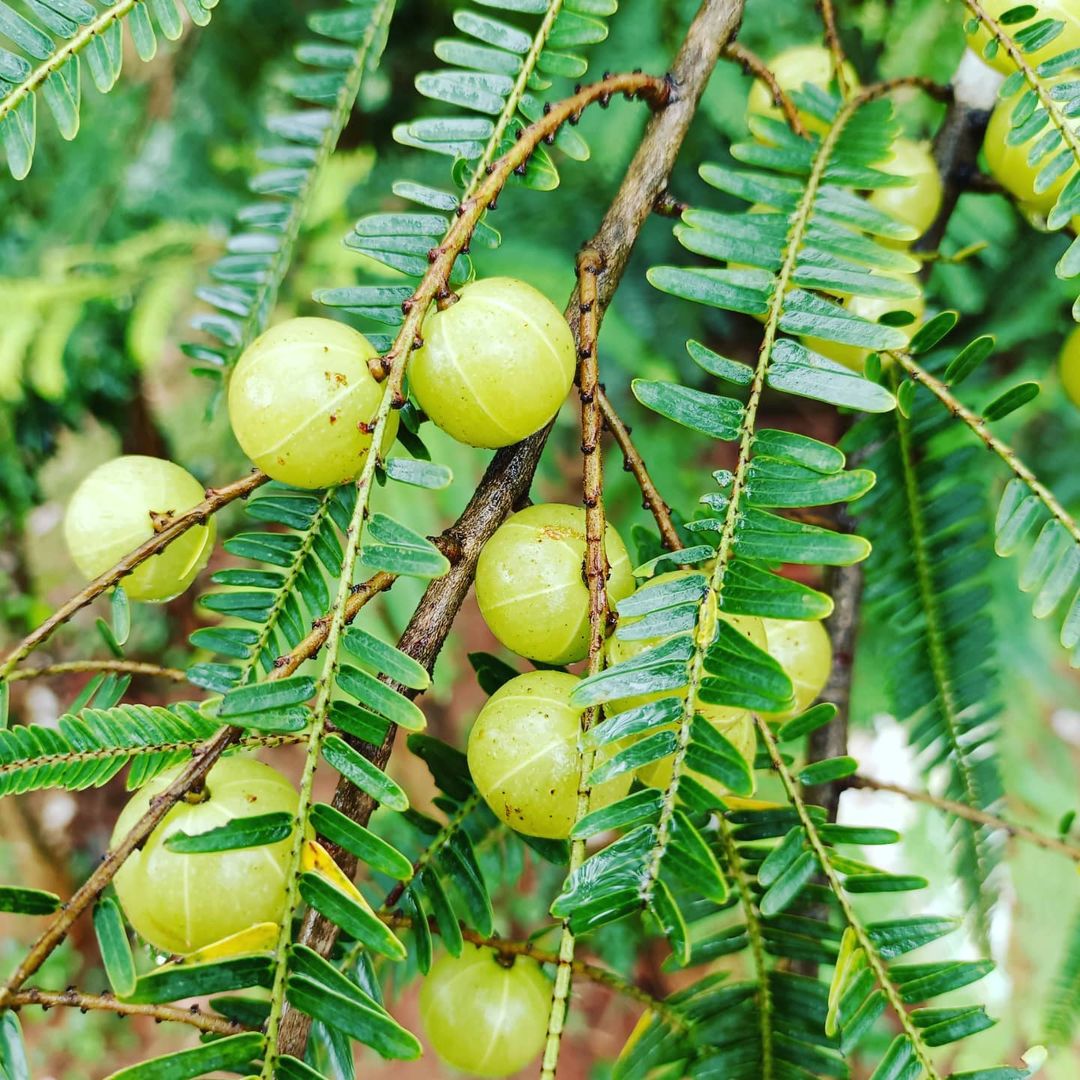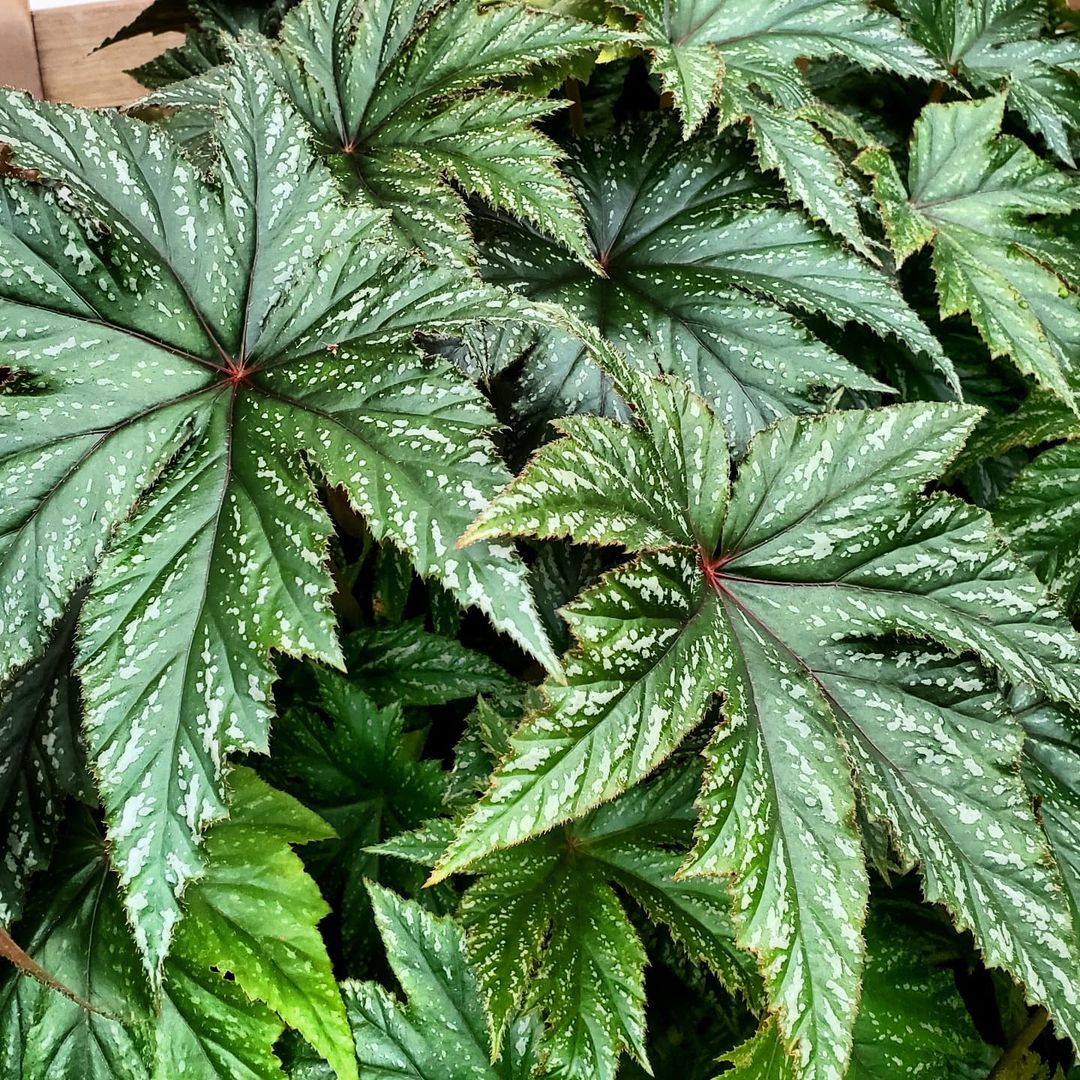The amla tree is a wild deciduous plant that can reach heights of 10-16 feet. It features smooth, gray-brown bark.
Are you interested in growing your own Amla tree and enjoying its nutritious fruits? This beginner’s guide will provide you with essential information and easy-to-follow steps to grow Indian gooseberry in your own backyard successfully.
Botanical Name: Phyllanthus Emblica
Common Names: Amalaki, Amblabaum, Amla, Amla Berry, Aonla, Avola, Arbre de Malacca, Arbre Myrobolan, Dhatriphala, Emblic, Emblica, Emblica Officinalis, Emblic Myrobalan, Groseille à Maquereau Indienne, Groseille Indienne, Groseillier de Ceylan, Grosella de la India, Indian-Gooseberry, Mirobalano, Myrobalan Emblic, Mirobalanus embilica, Neli, Phyllanthus Emblica, Yu Gan Zi
USDA Zones: 9-11
Learn Growing Watermelon in a Pot Vertically
Indian Gooseberry Plant Profile
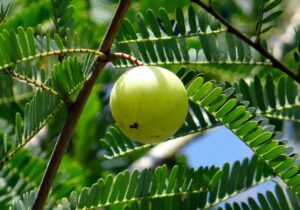
Amla, commonly known as Indian gooseberry, goes by two scientific names: Phyllanthus emblica and Emblica officinalis. This small tree bears yellow-green flowers that transform into round, edible fruits of the same color. The fruits, roughly the size of a golf ball, feature a pit and thin peel. It exhibits a greenish-yellow color that transitions to orange-brown as it reaches maturity. The fruit’s flesh is tart, juicy, and crisp.
The leaves of the amla tree resemble those of a tamarind tree or have a fern-like appearance. These oblong yet narrow leaves measure approximately 2-4 cm in length. The inconspicuous flowers of the tree are green in color, bisexual, and tend to appear in clusters.
Amla holds significant value in traditional Indian subcontinent recipes, diverse cuisines, and Ayurveda due to its medicinal properties. Its leaves, roots, fruits, seeds, bark, and flowers are utilized in the preparation of various items, including juice, chutney, jam, infusions, lotions, concentrates, herbal teas, and other natural concoctions.
Varieties of Indian Gooseberry
While commercial varieties of amla can be grown in tropical and subtropical regions, a combination of wild Himalayan amla is preferred for slightly temperate climates, experiencing mild dips in temperature below freezing point (32°F or 0°C). Here are a few popular types of Indian Gooseberry:
- NA-10
- Banarasi
- NA-4 (Krishna)
- NA-5 (Kanchan)
- BSR-1 (Bhavanisagar)
- NA-6
- Chakaiya
- Francis
- NA-7 (Promising variety)
Read Muskmelon vs. Cantaloupe: Differences and Similarities
Propagating Indian Gooseberry from Seeds
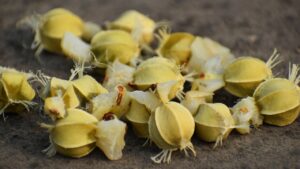
It is advisable to gather amla seeds during the fall once the smooth, round fruits have ripened and transitioned to a yellow-green hue for optimal results. Wait until the skin loses its translucent quality and instead appears opaque and dull.
- To extract the seeds from the amla fruit, cut it in half and remove the pit.
- Use a hammer or nutcracker to crack open the pit and retrieve the red-brown seeds.
- To determine their viability, soak the seeds in a bowl of water overnight.
- Only the seeds that sink to the bottom of the bowl are suitable for planting, while any seeds that remain floating should be discarded.
- To enhance the germination process, soak the seeds in lukewarm water for approximately 4-5 minutes.
- Prepare a small container by filling it with an equal blend of compost and potting soil.
- Ensure the soil medium is adequately moist by pouring water into it.
- Plant each seed in an individual pot, sowing them at a depth of approximately 0.4-0.5 inches.
- Ensure thorough watering and provide them with 4-6 hours of bright, indirect sunlight each day.
- After 3-4 weeks, the initial seedlings will begin to emerge.
Follow Tips to Grow Baby Corn at Home in Pots
Ideal Growing Conditions for Amla Tree
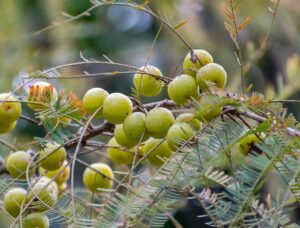
Sunlight
The amla tree thrives when exposed to full sunlight for the majority of the day. Avoid placing the plant in shaded areas, as this may lead to fewer and smaller-sized berries.
Soil
For growing Indian Gooseberry, use well-drained soil that ranges from loamy to light heavy, characterized by depth and ample organic content.
The soil’s pH level can vary from slightly acidic to slightly alkaline. Prior to planting, it is advisable to enhance the soil by incorporating generous amounts of organic matter.
Water
During the early stages of growth, it is crucial to provide regular and plentiful watering to the amla tree until it reaches a height of 5-6 feet.
Water the tree when the topsoil feels slightly dry to the touch. Once the tree matures, it will largely be self-sufficient and require less maintenance.
Temperature and Humidity
Amla thrives within a temperature range of 114-118°F (46-489°C). It appreciates a humidity level of 40-65 percent.
This tropical fruit is sensitive to extended periods of freezing temperatures and flourishes when protected from frost.
Find Is Pineapple a Berry or Citrus Fruit?
Amla Tree Care
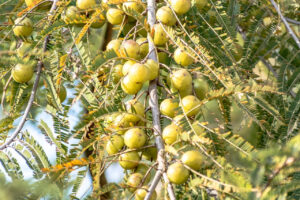
Fertilizer
Amla tree is capable of sourcing their own nutrients from most types of soil. Using nitrogen-rich fertilizers may result in excessive leaf growth at the expense of fruit production. If any feeding is necessary, the ideal choice for Indian gooseberries is bonemeal or fish, blood, and bone fertilizers. These slow-release fertilizers provide a well-rounded range of nutrients.
The application of aged manure is typically adequate for nourishing this tree. However, if the tree’s productivity is below average, you can supplement its nutrition with a balanced liquid fertilizer on a 3-5 week interval.
Pruning
Enhance air circulation and maximize sunlight exposure to all parts of the amla tree by pruning any dead, damaged, diseased branches, as well as those that are tangled or crossing each other. This practice will help maintain the tree’s overall health and vitality.
Pests and Diseases
Pest Infestations:
Caterpillars: Handpick and remove caterpillars from the amla tree. Alternatively, use organic insecticides or neem oil-based sprays to control their population.
Mealybugs: Wipe affected areas with a cotton swab dipped in alcohol or use insecticidal soap to eliminate mealybugs.
Aphids: Spray a solution of soapy water or neem oil on the infested parts of the plant to control aphids.
Diseases:
Rust: Remove and destroy infected leaves. Apply a fungicide specifically formulated for rust control to prevent further spread.
Anthracnose: Prune affected branches of the amla tree and dispose of them properly. Apply a copper-based fungicide to prevent the disease from spreading.
Leaf Spot: Remove infected leaves and dispose of them. Apply a copper-based fungicide to control the leaf spot.
It is important to maintain good overall plant health by providing proper sunlight, watering, and soil conditions. Regularly inspect the amla tree for any signs of pests or diseases. Promptly treat them to prevent further damage.
Read Papaya Tree Care
Harvesting Indian Gooseberry

It typically takes approximately five years for an amla tree grown from seed to start producing fruits. The fruits are characterized by their hard and glossy texture, displaying a dull green color. In tropical regions, these fruits generally appear from January to March.
The optimal time for harvesting amla fruits is in February when they transition from light green to an opaque and dull green-yellow color. Mature fruits are firmer, and you can test their readiness by shaking them vigorously. To harvest, use long bamboo poles with hooks to pluck the fruits.
A mature and healthy amla tree has the potential to yield around 50-60 pounds of fruits, which are abundant in Vitamin C.
Read about Mango Tree Care Guide
Benefits of Indian Gooseberry

1. Nutritional Value: Amla is a rich source of vitamin C, containing more of it than many other fruits. It also contains essential minerals such as calcium, iron, and phosphorus, along with antioxidants and dietary fiber.
2. Boosts Immunity: The high vitamin C content in amla helps strengthen the immune system, making it more resilient against infections, common colds, and seasonal illnesses.
3. Promotes Hair Health: It is widely used in hair care products and treatments. It nourishes the scalp, strengthens hair follicles, prevents hair loss, and adds shine and luster to the hair.
4. Skin Benefits: Amla is beneficial for the skin due to its antioxidant properties. It helps fight free radicals, reduces signs of aging, improves skin elasticity, and promotes a healthy and glowing complexion.
5. Supports Heart Health: Indian gooseberry may help maintain cardiovascular health by reducing cholesterol levels, regulating blood pressure, and preventing the buildup of plaque in the arteries.
6. Anti-inflammatory Properties: Amla exhibits anti-inflammatory properties that can help alleviate symptoms of arthritis and other inflammatory conditions.
7. Supports Liver Function: Indian gooseberry aids in detoxification and supports liver function, promoting a healthy liver and improving overall metabolic processes.
8. Diabetes Management: Amla has a low glycemic index and may help regulate blood sugar levels, making it beneficial for individuals with diabetes.
9. Anticancer Potential: Indian gooseberry contains antioxidants that may help protect against certain types of cancers and inhibit the growth of cancer cells.
Note: It is worth noting that while amla offers numerous potential benefits, it is advisable to consult with a healthcare professional before using amla as a remedy or supplement, particularly if you have any underlying medical conditions or are taking medication.

